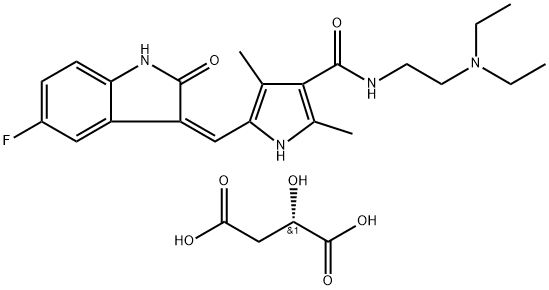A0788512
Axitinib , ≥99% , 319460-85-0
Synonym(s):
AG-013736;N-Methyl-2-((3-((1E)-2-(pyridin-2-yl)ethenyl)-1H-indazol-6-yl)sulfanyl)benzamide
CAS NO.:319460-85-0
Empirical Formula: C22H18N4OS
Molecular Weight: 386.47
MDL number: MFCD09837898
EINECS: 638-771-6
| Pack Size | Price | Stock | Quantity |
| 10MG | RMB239.20 | In Stock |
|
| 50MG | RMB312.80 | In Stock |
|
| 250MG | RMB1140.00 | In Stock |
|
| 1G | RMB2592.00 | In Stock |
|
| 5g | RMB2743.20 | In Stock |
|
| others | Enquire |
Update time: 2022-07-08
PRODUCT Properties
| Melting point: | 213-215°C |
| Boiling point: | 668.9±55.0 °C(Predicted) |
| Density | 1.4 |
| storage temp. | room temp |
| solubility | DMSO: ≥8mg/mL |
| form | powder |
| pka | 12.70±0.40(Predicted) |
| color | white to tan |
| Stability: | Stable for 1 year from date of purchase as supplied. Solutions in DMSO may be stored at -20°C for up to 3 months. |
| InChI | InChI=1S/C22H18N4OS/c1-23-22(27)18-7-2-3-8-21(18)28-16-10-11-17-19(25-26-20(17)14-16)12-9-15-6-4-5-13-24-15/h2-14H,1H3,(H,23,27)(H,25,26)/b12-9+ |
| InChIKey | RITAVMQDGBJQJZ-FMIVXFBMSA-N |
| SMILES | C(NC)(=O)C1=CC=CC=C1SC1=CC2=C(C=C1)C(/C=C/C1=NC=CC=C1)=NN2 |
| CAS DataBase Reference | 319460-85-0(CAS DataBase Reference) |
Description and Uses
In January 2012, the US FDA approved axitinib (also referred to as AG-013736) for the treatment of advanced renal cell carcinoma (RCC) for patients who have not responded to prior therapy. Axitinib is a pan VEGF inhibitor and functions by binding to the intracellular tyrosine kinase catalytic domain of VEGF leading to blockade of signaling through this angiogenic pathway.
Axitinib is used in cancer therapy. Axitinib (AG-013736) is a multi-target inhibitor of VEGFR1, VEGFR2, VEGFR3, PDGFRβ and c-Kit with IC50 of 0.1 nM, 0.2 nM, 0.1-0.3 nM, 1.6 nM and 1.7 nM, respectively.
Safety
| Symbol(GHS) |   GHS07,GHS09 |
| Signal word | Warning |
| Hazard statements | H302-H400 |
| Precautionary statements | P273-P301+P312+P330 |
| Hazard Codes | Xn,N |
| Risk Statements | 22-50/53 |
| Safety Statements | 60-61 |
| RIDADR | UN 3077 9 / PGIII |
| WGK Germany | 3 |
| HS Code | 29333990 |




